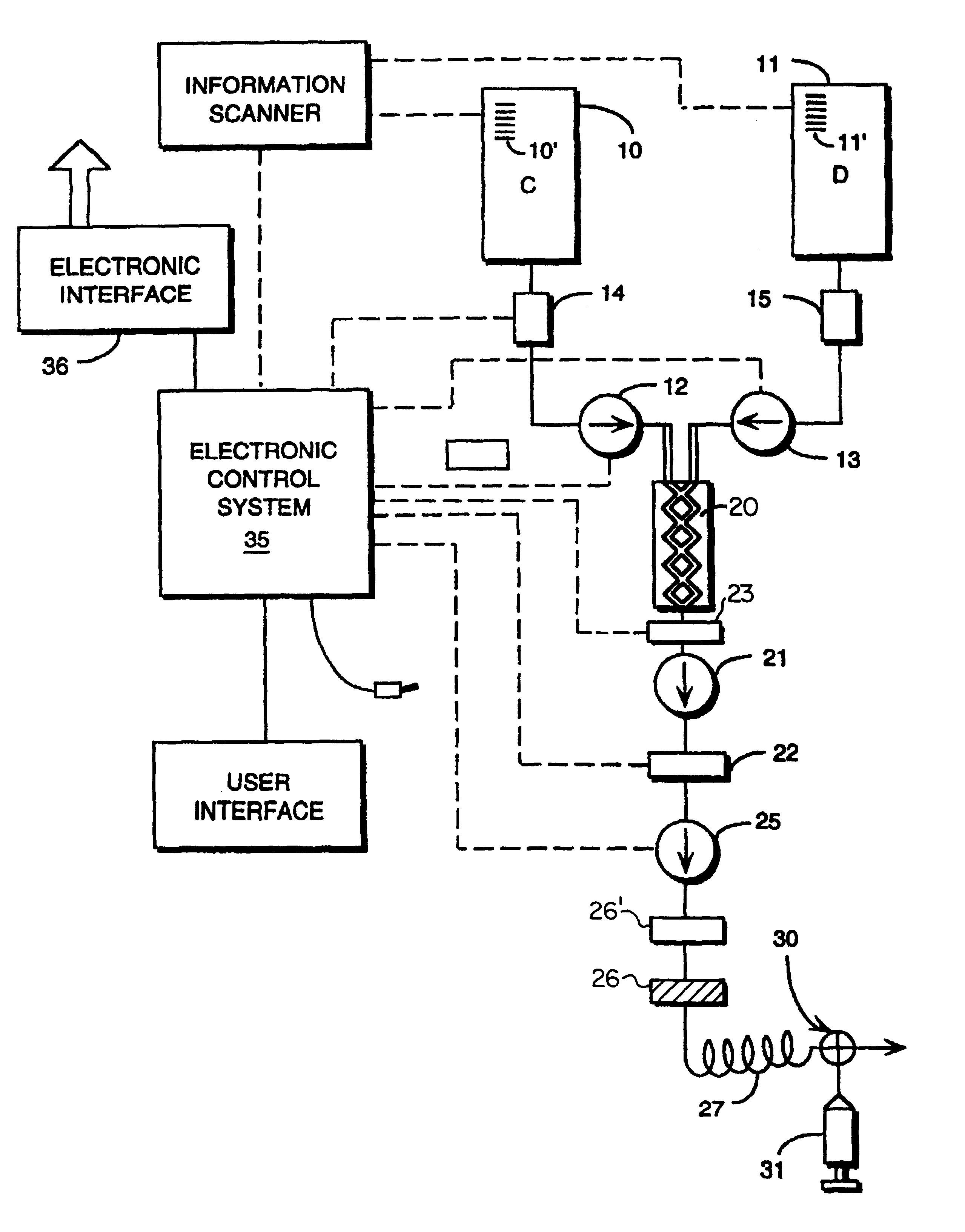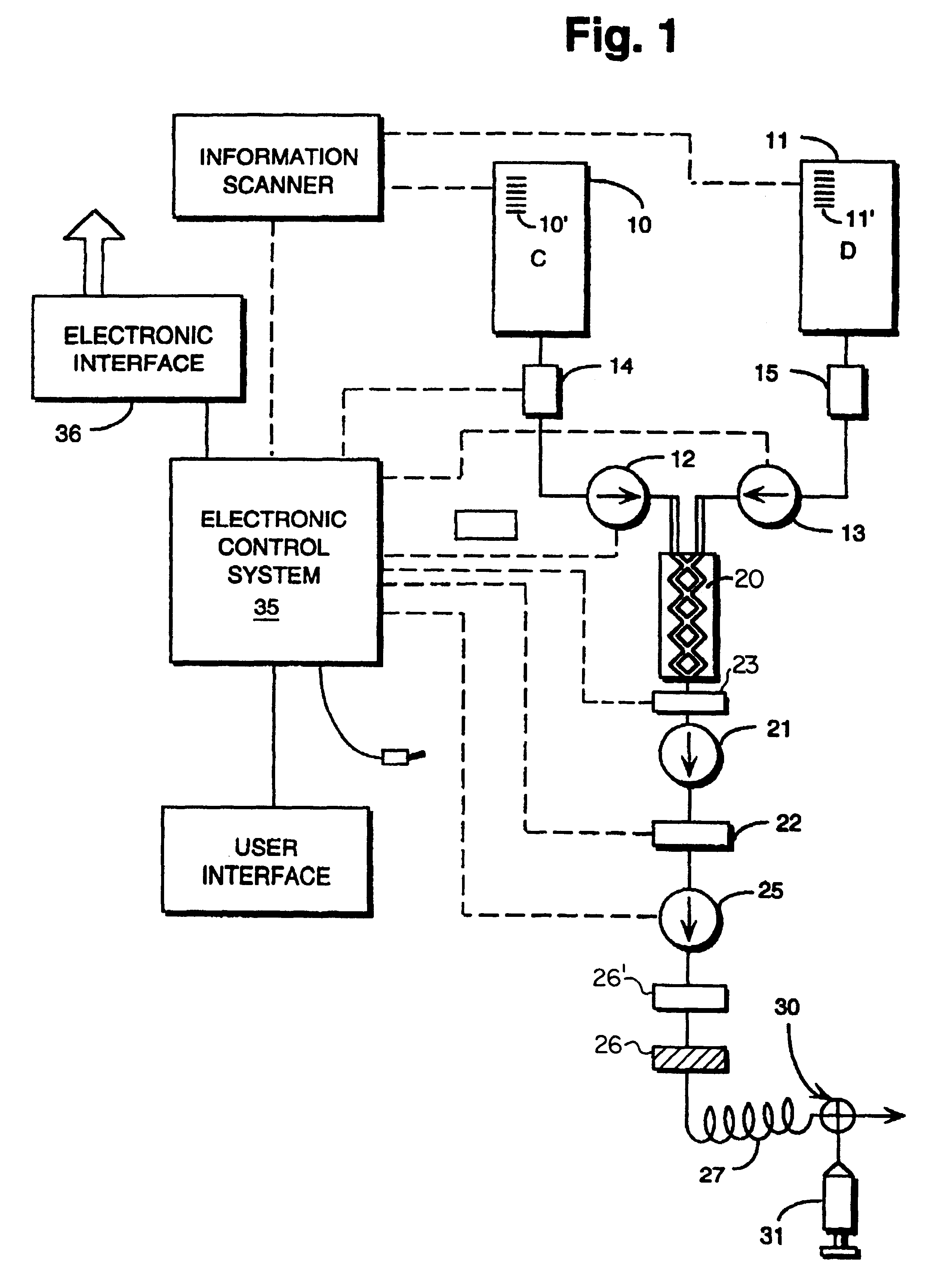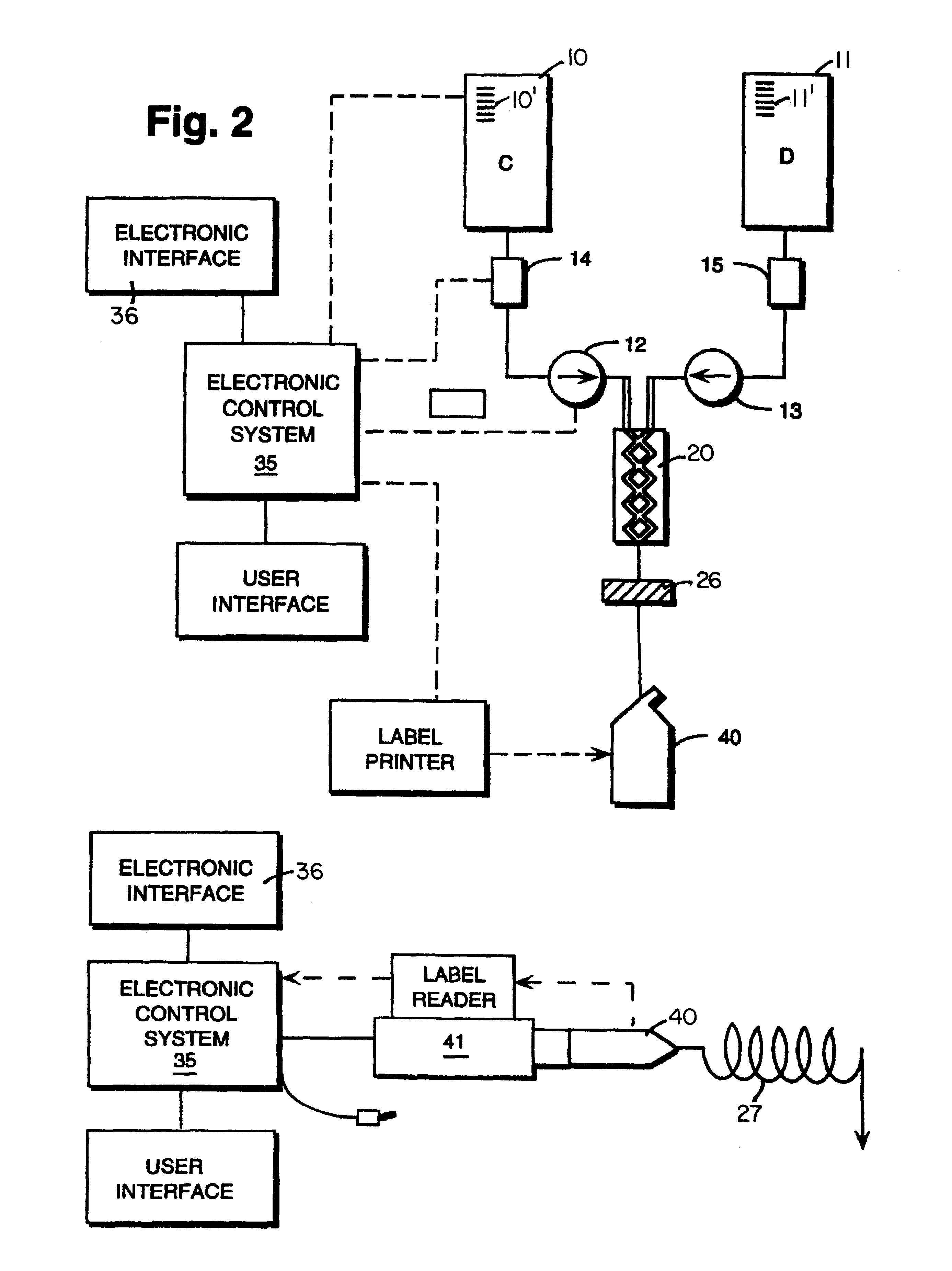Fluid delivery system including a reusable flow path and a per-patient disposable fluid path
a flow path and fluid delivery technology, applied in the field of fluid delivery system including, can solve the problems of increasing costs throughout the contrast supplier chain, not being universally used, and high cost of non-ionic x-ray contrast media, and achieve the effect of minimizing the chance of cross-contamination
- Summary
- Abstract
- Description
- Claims
- Application Information
AI Technical Summary
Benefits of technology
Problems solved by technology
Method used
Image
Examples
Embodiment Construction
It is a goal of this invention to enable delivery of only the amount of contrast needed to a patient, with minimal contrast waste. A companion goal is to be able to deliver whatever volume of contrast is needed, when it is needed, without the arbitrary limitation of syringe or mixing chamber size. The bulk containers can hold more fluid than would be given to one patient, so its size is not a limit.
This is accomplished by changing the way contrast is packaged and delivered to the patient. Bulk contrast bottles would be manufactured and distributed to the hospital in only a few number of sizes. A given procedure room would only stock one size of bottle. The bulk contrast could only be available in a single high concentration, the highest used in current procedures, or it may be available in a limited number of different concentrations. Two bottle sizes times two concentrations is only four variations that a manufacturer would potentially have to deal with.
It is possible to eliminate ...
PUM
 Login to View More
Login to View More Abstract
Description
Claims
Application Information
 Login to View More
Login to View More - R&D
- Intellectual Property
- Life Sciences
- Materials
- Tech Scout
- Unparalleled Data Quality
- Higher Quality Content
- 60% Fewer Hallucinations
Browse by: Latest US Patents, China's latest patents, Technical Efficacy Thesaurus, Application Domain, Technology Topic, Popular Technical Reports.
© 2025 PatSnap. All rights reserved.Legal|Privacy policy|Modern Slavery Act Transparency Statement|Sitemap|About US| Contact US: help@patsnap.com



